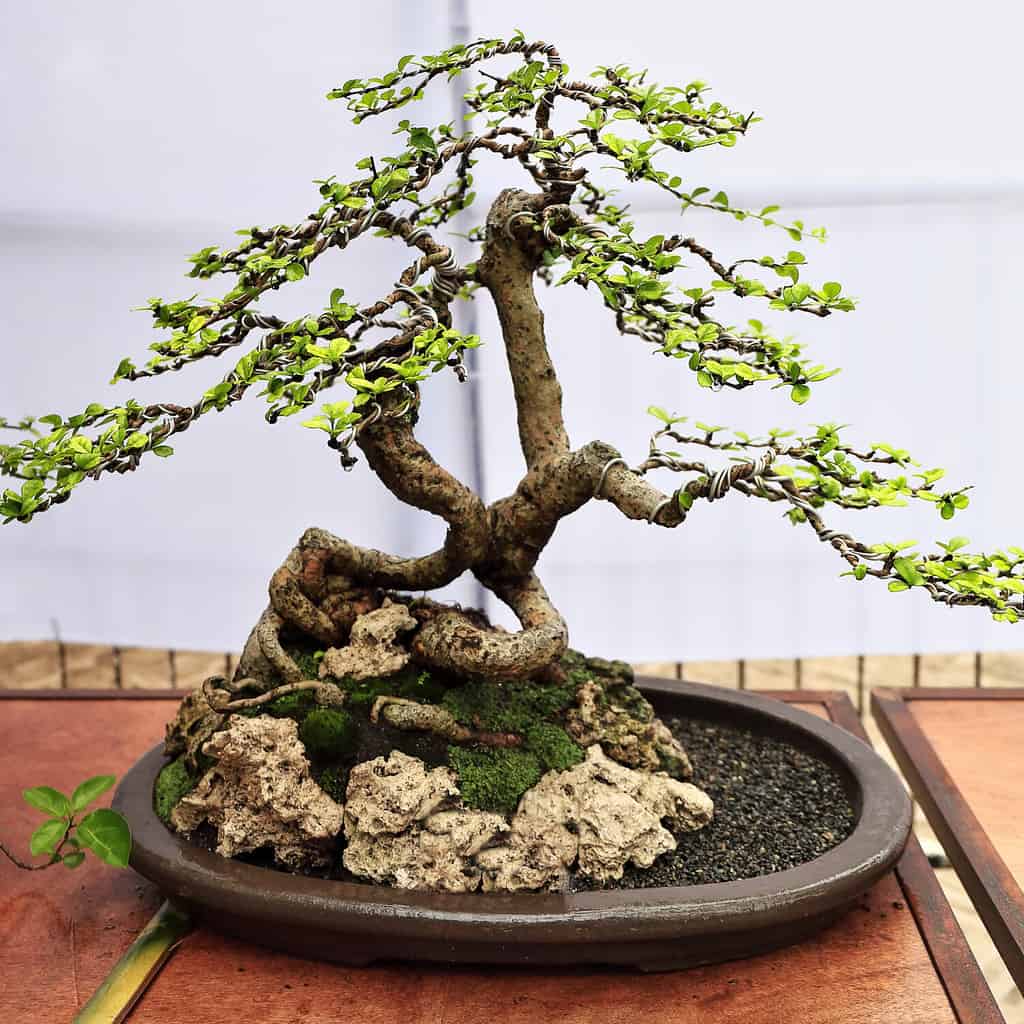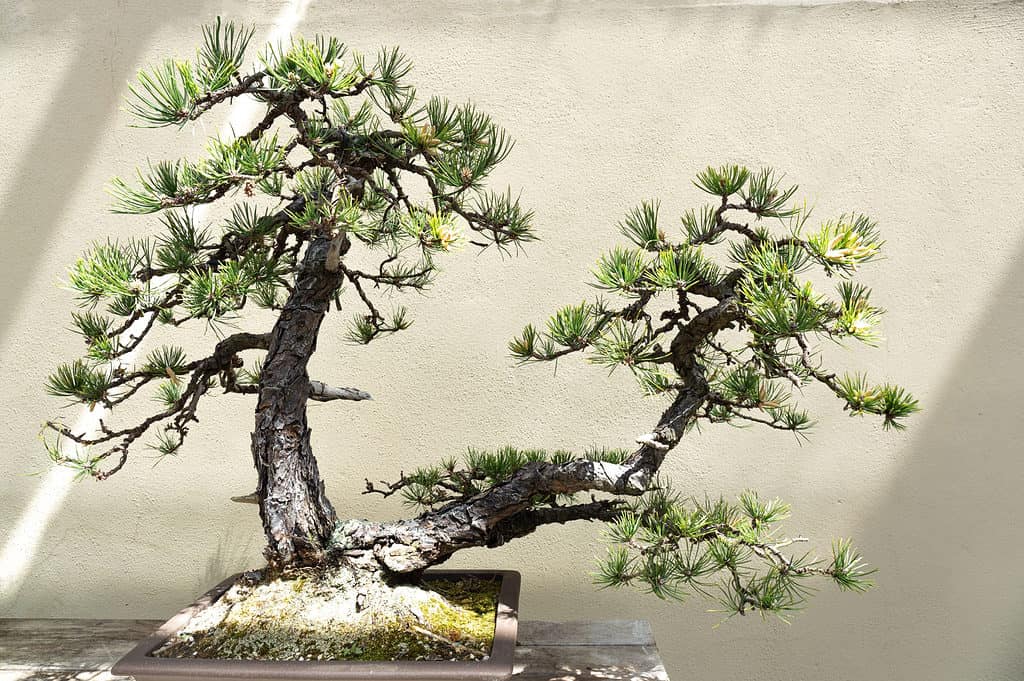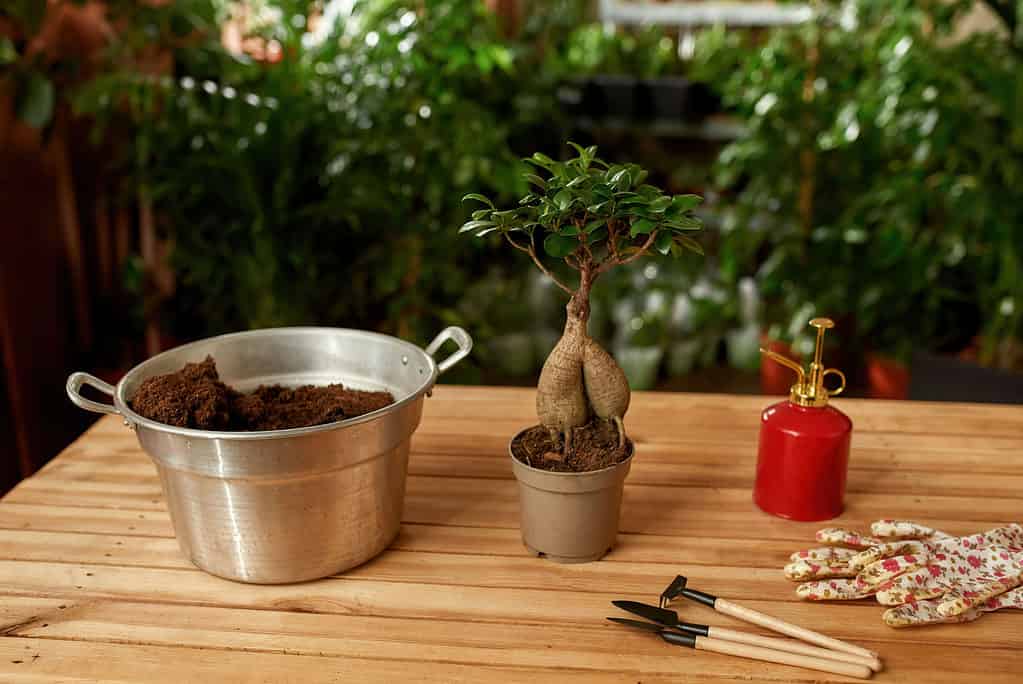How Often Do You Water a Bonsai Tree? 7 Critical Tips for a Thriving Plant
The art of growing bonsai trees is a popular hobby across the world, and the good news is they’re simple to look after (with a few tips on effective care, of course!) One of the most important aspects is how often you water a bonsai tree, followed by their light requirements, and the best type of soil.
Let’s discover how often you need to water an indoor bonsai tree, plus 7 critical care tips for a thriving plant.

©Wirestock/ via Getty Images
How Often Do You Water a Bonsai Tree?
There’s no clear-cut answer like “once a week” because every bonsai tree is different and every home is different. However, expert growers say you should never let a bonsai tree dry out. How you manage this depends on a few factors:
- Tree species
- Tree size
- Pot size
- The season
- The soil mixture
- The climate
Here’s how you can tell if your bonsai tree needs water:
The best method is checking your bonsai’s soil every other day, especially in summer, when their soil dries out quickly. Push your finger into the soil. Is it dry at half an inch deep? Go ahead and water it. If it’s still damp, check again in a day or so.
It’s important to let a bonsai tree dry out a little because consistently soggy roots develop rot, and that kills the tree.
If you have a bonsai collection, it’s highly unlikely they’ll dry out at the same time. Each tree is an individual. If you water on a regime, some will dry out before it’s their appointed time to drink.
When a bonsai dries out, it’ll drop leaves. Each time it dries out, the tree is damaged. This is why it’s so important to treat each bonsai tree as an individual and soak the soil before its parched.

©rweisswald/Shutterstock.com
How to Water a Bonsai Tree
When the soil feels a little dry, it’s watering time.
The best way to give a bonsai all the water it requires is soaking its roots. Avoid a dribble of water each day, instead, do one of the following:
- Take the bonsai tree to a sink and submerge its roots. Water soaking up through the drainage hole allows your tree to absorb the liquid it needs. Then, leave it to run clear on the draining board.
- Water from the top until water escapes from the drainage hole, then repeat water after a few minutes. Repeat watering gives the tree time to drink. Use a fine nozzle watering can, so soil isn’t washed away.
Is Rainwater Good for Bonsai Trees?
Yes, rainwater is good for bonsai trees because it doesn’t contain any chemicals like chlorine. However, tap water is just fine if that’s what you have to hand. The important aspect is making sure a bonsai tree doesn’t dry out.
What About Ice Cubes?
Some folks suggest using ice cubes to water bonsai trees. Although this feels precise and efficient to us, it’s not a good idea.
An ice cube won’t soak a bonsai tree’s roots sufficiently, and the cold might shock a tree that’s happily growing in warm soil. Plus, adding an ice cube to the soil each day creates waterlogging because there’s no time for the soil to dry slightly.

©Renata Ty/Shutterstock.com
Are Bonsai Trees Real Trees?
Yes, bonsai trees are real miniature trees grown in containers. Many species suit bonsai cultivation including maples, ficus, and juniper.
The practice began in China over 3,000 years ago. It was originally called “penjing”, which was the art of cultivating plants to imitate the natural world, but in miniature. Bon-sai is Japanese for “planted in a container”. It’s often misspelled as banzai or bonzai.
7 Critical Care Tips for Bonsai Trees
Now we know how often to water a bonsai tree, what about other care aspects? Let’s look at light, soil, fertilizer, re-potting, temperature, humidity, and pest control.
1. Sunlight
Indoor bonsai trees need a south-facing window because lots of light is needed to keep them healthy.
Place yours in a light, bright spot that doesn’t receive direct midday sun. Magnified by a window pane, strong sunlight can burn foliage and damage your tree. Take into consideration how the sun moves across the seasons. A light windowsill in winter might turn into a blazing inferno in summer. Consider a net curtain or shutters to protect your bonsai trees during sunny months.
Without lots of light, a bonsai tree stops growing, sheds its leaves, and dies. Absorbing enough light is essential.

©J.Blanco/Shutterstock.com
2. Soil
The best bonsai tree soil mix is a combination of half organic potting mix to retain essential moisture, then a quarter pumice and a quarter lava rock to aid drainage.
Commercial bonsai tree soil mixtures work well, just ensure you don’t use pure potting compost as this leads to compaction and soggy roots.
3. Fertilizing
Outdoor trees obtain nutrients by extending their roots into fresh areas and forming relationships with beneficial fungi. Pot-grown trees can’t do this, instead, they rely on you to replenish their soil. Bonsai trees are particularly at risk because their containers are usually small.
Fertilize bonsai trees throughout their growing season. This starts in early spring and lasts until the fall. A good quality bonsai-specific fertilizer used according to the instructions will help keep a bonsai tree thriving.
An effective soil mixture of potting mix, pumice, and lava rock ensures good drainage and prevents salt build-up.
4. Re-potting
How often you need to repot a bonsai tree depends on the species and its rate of growth. Young trees might need repotting every year.
Sometimes you might spot roots poking through the pot’s drainage hole, but the best way to tell is by easing the tree from its container and checking the root ball.
If roots look compacted, form the shape of the container, or they’re growing in a circular motion, it’s time to repot because the tree won’t efficiently absorb enough water or fertilizer. Eventually, the tree will simply die. If the roots are still nestled in soil, it’s fine for now.
The best time to repot a bonsai tree is spring, just before its growing season begins. This prevents damage, and any damage that does occur is quickly repaired by the awakening tree.
Here’s how:
- Untie any wire anchoring the tree to the pot (in the drainage hole)
- Carefully use a knife or bonsai tree root rake to loosen soil from the pot edges
- Begin to remove soil from the roots, taking care not to break the roos. Use a chopstick for an authentic feel!
- Cut away up to 30% of long roots with sharp clean scissors
- Add a thin layer of pumice to the base
- Add a thin layer of bonsai potting soil
- Add the tree, anchoring it again if necessary
- Add most compost and use your chopstick to firm it around the roots and release air pockets
- Water thoroughly

©BAZA Production/Shutterstock.com
5. Temperature
Avoid placing bonsai trees above radiators, televisions, or other heated appliances like computers because their heat dries out soil very quickly.
6. Should I Spray My Bonsai Tree with Water?
Outdoor trees are washed clean by rain, but indoor trees suffer from dust or debris buildup. It’s a good idea to regularly rinse or spray bonsai trees to remove dirt buildup. During summer rain showers, pop bonsai trees outdoors to absorb light, clean rainwater, and fresh air.
Humidity lovers include Carmona or Ficus species. You can increase humidity by spraying foliage with water or placing its container on a saucer of damp pebbles.
7. Pests
Aphids, spider mites, mealy bugs, vine weevils, ants, caterpillars, and scale insects can affect bonsai trees. In fact, any insect that uses a wild tree can use a miniature version, too!
Identify the culprit and treat it accordingly. Bonsai tree insecticides, rubbing alcohol, and neem oil fix most bonsai pest problems.
Ensure the affected bonsai tree is isolated because insects spread quickly through household plant collections. It’s worth checking every plant in your home if you find one that’s infested.

©Scorsby/Shutterstock.com









